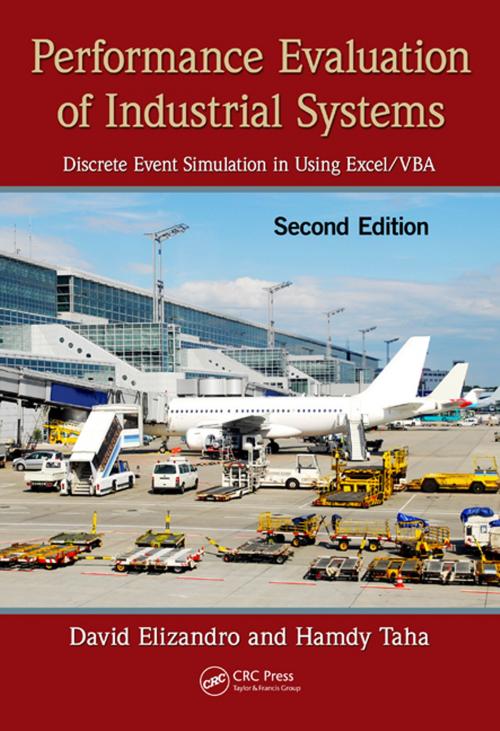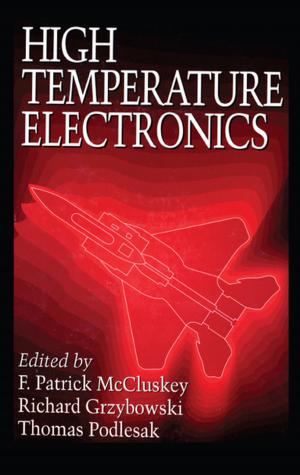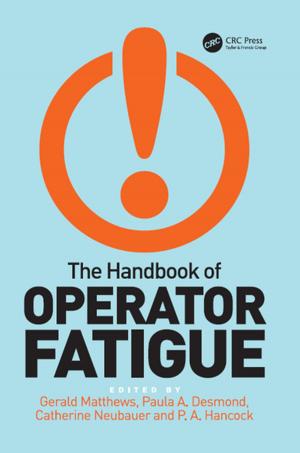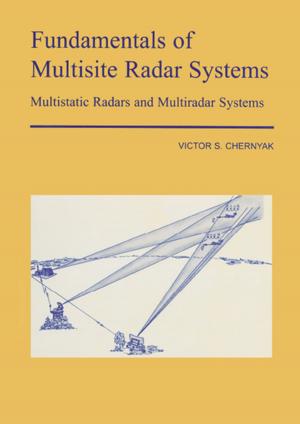Performance Evaluation of Industrial Systems
Discrete Event Simulation in Using Excel/VBA, Second Edition
Nonfiction, Science & Nature, Technology, Engineering, Industrial, Manufacturing| Author: | Hamdy Taha, David Elizandro | ISBN: | 9781466503342 |
| Publisher: | CRC Press | Publication: | April 30, 2012 |
| Imprint: | CRC Press | Language: | English |
| Author: | Hamdy Taha, David Elizandro |
| ISBN: | 9781466503342 |
| Publisher: | CRC Press |
| Publication: | April 30, 2012 |
| Imprint: | CRC Press |
| Language: | English |
Basic approaches to discrete simulation have been process simulation languages (e.g., GPSS) and event-scheduling type (e.g., SIMSCRIPT). The trade-offs are that event-scheduling languages offer more modeling flexibility and process-oriented languages are more intuitive to the user. With these considerations in mind, authors David Elizandro and Hamdy Taha embarked on the development of a new discrete simulation environment that is easy to use, yet flexible enough to model complex production systems. They introduced this environment, Design Environment for Event Driven Simulation (DEEDS), in Simulation of Industrial Systems: Discrete Event Simulation in Using Excel/VBA. The DEEDS environment is itself an Excel/VBA add-in.
Based on this foundation, the second edition, now titled Performance Evaluation of Industrial Systems: Discrete Event Simulation in Using Excel/VBA incorporates the use of discrete simulation to statistically analyze a system and render the most efficient time sequences, designs, upgrades, and operations. This updated edition includes new visualization graphics for DEEDS software, improvements in the optimization of the simulation algorithms, a new chapter on queuing models, and an Excel 2007 version of the DEEDS software. Organized into three parts, the book presents concepts of discrete simulation, covers DEEDS, and discusses a variety of applications using DEEDS.
The flexibility of DEEDS makes it a great tool for students or novices to learn concepts of discrete simulation and this book can form the basis of an introductory undergraduate course on simulation. The expanded depth of coverage in the second edition gives it a richness other introductory texts do not have and provides practitioners a reference for their simulation projects. It may also be used as a research tool by faculty and graduate students who are interested in "optimizing" production systems.
Basic approaches to discrete simulation have been process simulation languages (e.g., GPSS) and event-scheduling type (e.g., SIMSCRIPT). The trade-offs are that event-scheduling languages offer more modeling flexibility and process-oriented languages are more intuitive to the user. With these considerations in mind, authors David Elizandro and Hamdy Taha embarked on the development of a new discrete simulation environment that is easy to use, yet flexible enough to model complex production systems. They introduced this environment, Design Environment for Event Driven Simulation (DEEDS), in Simulation of Industrial Systems: Discrete Event Simulation in Using Excel/VBA. The DEEDS environment is itself an Excel/VBA add-in.
Based on this foundation, the second edition, now titled Performance Evaluation of Industrial Systems: Discrete Event Simulation in Using Excel/VBA incorporates the use of discrete simulation to statistically analyze a system and render the most efficient time sequences, designs, upgrades, and operations. This updated edition includes new visualization graphics for DEEDS software, improvements in the optimization of the simulation algorithms, a new chapter on queuing models, and an Excel 2007 version of the DEEDS software. Organized into three parts, the book presents concepts of discrete simulation, covers DEEDS, and discusses a variety of applications using DEEDS.
The flexibility of DEEDS makes it a great tool for students or novices to learn concepts of discrete simulation and this book can form the basis of an introductory undergraduate course on simulation. The expanded depth of coverage in the second edition gives it a richness other introductory texts do not have and provides practitioners a reference for their simulation projects. It may also be used as a research tool by faculty and graduate students who are interested in "optimizing" production systems.















